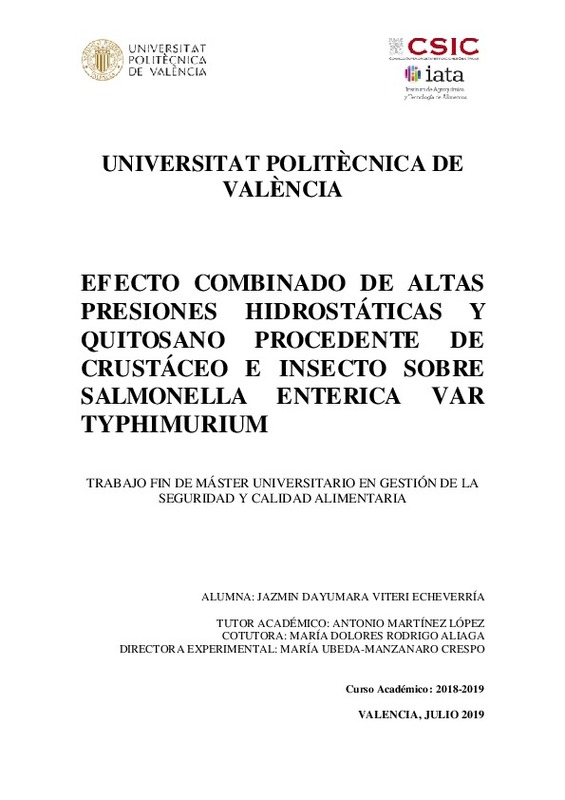JavaScript is disabled for your browser. Some features of this site may not work without it.
Buscar en RiuNet
Listar
Mi cuenta
Estadísticas
Ayuda RiuNet
Admin. UPV
Efecto combinado de altas presiones hidrostáticas y quitosanos procedentes de crustáceos e insectos sobre Salmonella enterica var. Typhimurium
Mostrar el registro completo del ítem
Viteri Echeverría, JD. (2019).Efecto combinado de altas presiones hidrostáticas y quitosanos procedentes de crustáceos e insectos sobre Salmonella enterica var. Typhimurium http://hdl.handle.net/10251/125241
Por favor, use este identificador para citar o enlazar este ítem: http://hdl.handle.net/10251/125241
Ficheros en el ítem
Metadatos del ítem
| Título: | Efecto combinado de altas presiones hidrostáticas y quitosanos procedentes de crustáceos e insectos sobre Salmonella enterica var. Typhimurium | |||
| Autor: | ||||
| Director(es): | Rodrigo Aliaga, María Dolores Manzanero Crespo, María Ubeda | |||
| Entidad UPV: |
|
|||
| Fecha acto/lectura: |
|
|||
| Resumen: |
[ES] Las enfermedades trasmitidas por alimentos suponen actualmente una
problemática de alerta y preocupación. Por otra parte, la calidad y seguridad
de los alimentos durante su almacenamiento y distribución está ...[+]
[EN] Foodborne diseases are currently a problem of alertness and concern. On
the other hand, the quality and safety of the food during storage and
distribution is influenced by the activity of the microorganisms. To ...[+]
|
|||
| Palabras clave: |
|
|||
| Derechos de uso: | Reserva de todos los derechos | |||
| Editorial: |
|
|||
| Titulación: |
|
|||
| Tipo: |
|
recommendations
Este ítem aparece en la(s) siguiente(s) colección(ones)
-
ETSIAMN - Trabajos académicos [3541]
Escuela Técnica Superior de Ingeniería Agronómica y del Medio Natural







